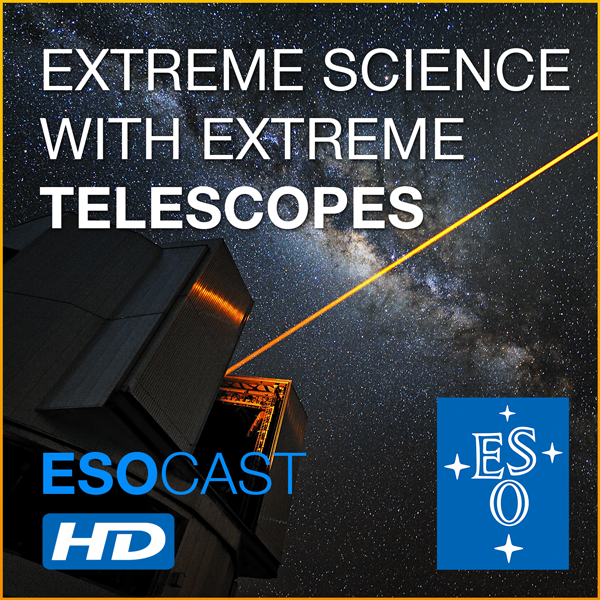Episodes
Published 04/16/24
Published 04/16/24
Published 04/11/24
Published 02/29/24
Using ESO’s Very Large Telescope, astronomers have found a metal ‘scar’ imprinted on the surface of a dead star. This video summarises the discovery.
Published 02/26/24
Astronomers have characterised the most luminous quasar observed to date, which is powered by the fastest-growing black hole. This black hole is growing in mass by the equivalent of one Sun per day. The matter being pulled in toward this black hole forms a disc that measures seven light-years in diameter — about 15 000 times the distance from the Sun to the orbit of Neptune.
Published 02/19/24
Astronomers have found a direct link between the explosive deaths of massive stars and the formation of the most compact and enigmatic objects in the Universe — black holes and neutron stars. This video summarises the discovery.
Published 01/10/24
Using ALMA, astronomers have detected the magnetic field of a galaxy so far away that its light has taken more than 11 billion years to reach us. Never before had we detected a galaxy’s magnetic field this far away. This video summarises the discovery.
Published 09/06/23
Published 08/30/23
Published 08/24/23
Using multiple telescopes around the world, including European Southern Observatory (ESO) facilities, researchers have uncovered a living star that is likely to become a magnetar, an ultra-magnetic dead star. This video summarises the discovery.
Published 08/17/23
Using the Atacama Large Millimeter/submillimeter Array (ALMA), astronomers have found the possible ‘sibling’ of a planet orbiting a distant star. This video summarises the discovery.
Published 07/19/23
Using ESO's VISTA telescope, astronomers have created a vast infrared atlas of five nearby stellar nurseries by piecing together more than one million images.
Published 05/11/23
Using ESO’s Very Large Telescope, astronomers have found the fingerprints left by the explosions of the first stars.
Published 05/03/23
Using ALMA, astronomers have detected a large reservoir of hot gas in the still-forming galaxy cluster around the Spiderweb galaxy –– the most distant detection of such hot gas yet. This further reveals just how early these structures begin to form.
Published 03/29/23
Using ALMA, astronomers have detected the chemical signature of gaseous water in the planet-forming disc V883 Orionis. This acts as a timestamp for the water’s formation, allowing us to trace its journey.
Published 03/08/23
Using ESO’s Very Large Telescope, barium has been detected in the atmosphere of two exoplanets.
Published 10/13/22
The black hole police, a team of astronomers known for debunking black hole discoveries, reported finding a "needle in a haystack". After searching nearly 1000 stars outside our galaxy, they found that one of them has a stellar-mass black hole as a companion. This short video summarises the discovery.
Published 07/18/22
What does it take to capture an image of the black hole at the centre of our galaxy? This video explains how the Event Horizon Telescope (EHT) works, and how astronomers managed to create one massive Earth-sized telescope big enough to “see” at the edge of black holes.
Published 05/12/22
Astronomers have discovered a new type of explosion occurring on white dwarf stars in two-star systems. This video summarises the discovery.
Published 04/20/22
How do the ingredients for life end up on planets? The discovery of the largest molecule ever found in a planet-forming disc is providing clues.
Published 03/08/22
One team found a black hole, the other challenged their results. This is the story of how they got together to find out who was right.
Published 03/02/22
Active galactic nuclei (AGNs) are extremely energetic sources powered by supermassive black holes. This short video provides insights into these peculiar objects by showcasing a new discovery on the AGN at the centre of the Messier 77 galaxy.
Published 02/16/22
In this short video, we highlight the discovery of planet Proxima d around the star closest to the Sun.
Published 02/10/22


